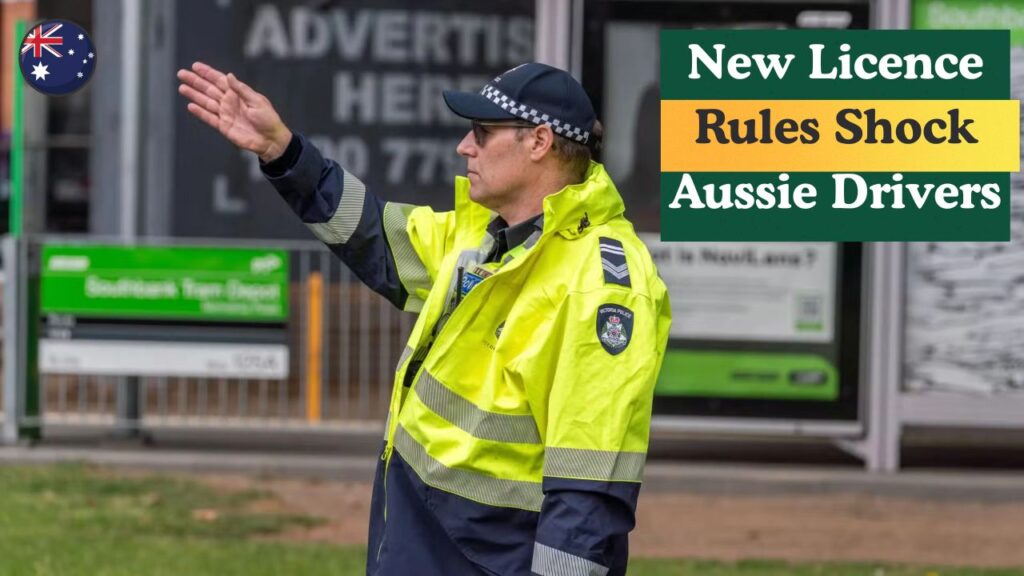Australian authorities have introduced new licence regulations aimed at improving road safety amid growing concerns about accident trends. The updated rules are designed to tackle a worrying pattern of driver behaviour seen across the country, including speeding, distracted driving, and rising crash rates. Transport departments have highlighted that these changes are part of a broader effort to make Aussie roads safer and protect both drivers and pedestrians. With the new rules coming into effect soon, every motorist is encouraged to stay informed and comply with the latest licensing standards to avoid penalties.

Why New Licence Regulations Are Being Introduced
The rise in road accidents over the past few years has prompted authorities to review and strengthen driving licence rules across Australia. Reports show that fatigue, phone usage, and lack of driver training are major causes of fatalities. These new laws aim to establish a more responsible driving culture by implementing stricter testing standards, longer learner periods, and harsher penalties for repeat offenders. Government officials believe that improving driver awareness and monitoring will play a crucial role in reducing accidents and restoring public confidence in the safety of Aussie roads.
Key Changes Under the Updated Licence Regulations
The licence reform program introduces several key updates affecting both new and existing drivers. Authorities are set to lower the tolerance for traffic violations, especially for P-plate drivers. New rules will also require additional hours of supervised driving before qualifying for a full licence. Authorities have clarified that the goal isn’t just to punish but to encourage safer habits and continuous education. The new system may also include digital licence tracking for transparency, allowing better enforcement of penalties and monitoring of driver history.
Impact on Drivers and Road Safety in Australia
For millions of motorists, these new driver regulations could mean stricter checks and higher accountability. Many drivers will now need to complete refresher courses or prove ongoing compliance with road safety guidelines. Experts believe that if implemented effectively, the rules will lead to fewer crashes and more consistent driving behaviour. The focus is to ensure that road users treat driving as a responsibility rather than a right. While some may see this as restrictive, the long-term safety benefits for families and communities far outweigh the inconvenience of adapting to the new rules.
Detailed Breakdown of New Licence Rules
The updated Aussie licence policy covers multiple aspects, from learner eligibility to senior driver testing. Each age and licence category has its own requirements, ensuring fair but firm regulation. Authorities plan to roll out these updates gradually across states, allowing for smooth adaptation and public awareness campaigns. Here’s a closer look at the main highlights of the changes in a simplified format below:
| Licence Category | New Rule Introduced | Effective Date | Key Objective |
|---|---|---|---|
| Learner Drivers | Minimum 150 supervised hours required | 1 January 2026 | Improve driving experience |
| P-Plate Holders | Stricter penalties for speeding | March 2026 | Encourage safer driving |
| Senior Drivers | Compulsory medical check every 2 years | July 2026 | Ensure physical fitness |
| All Drivers | Mandatory digital licence records | December 2025 | Enhance transparency and tracking |
FAQ 1: When do the new licence rules start?
The new regulations will gradually take effect between January and December 2026.
FAQ 2: Who will be most affected by the changes?
Learner and provisional drivers will see the biggest adjustments under the new system.
FAQ 3: Will old licences still be valid?
Existing licences remain valid, but holders must meet the new compliance standards over time.
FAQ 4: Why are authorities updating these rules now?
The aim is to combat rising accident rates and create a safer driving culture across Australia.




